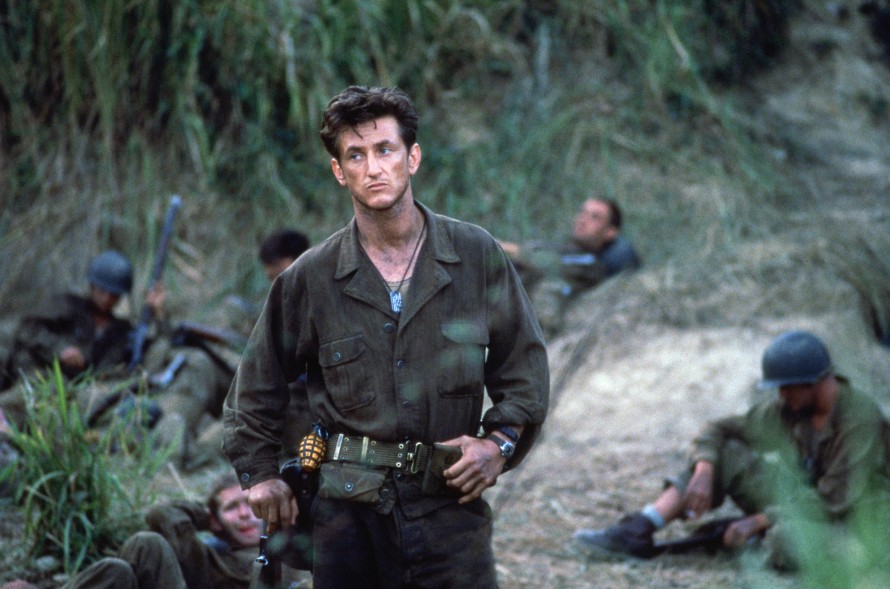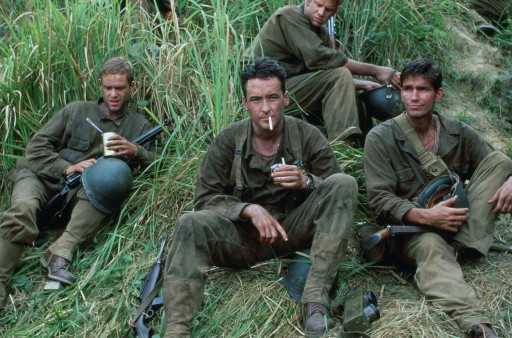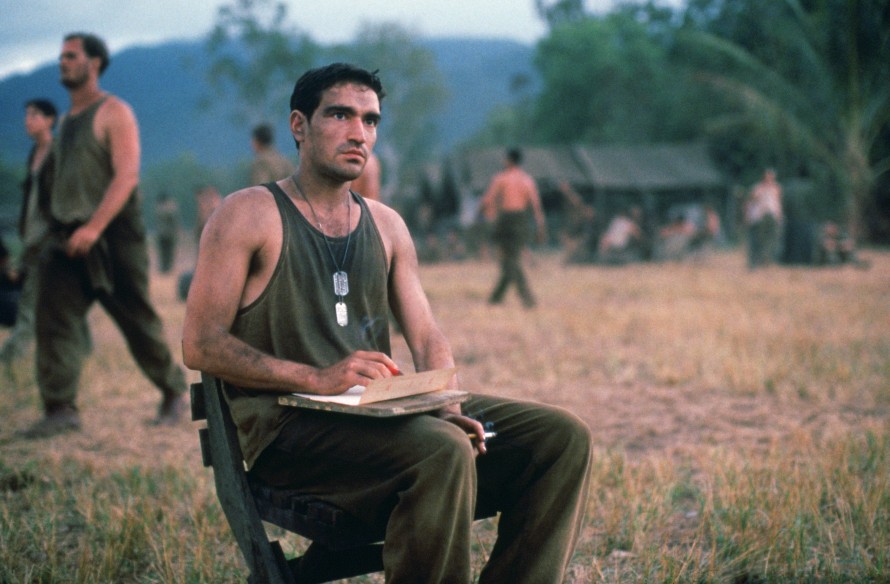2020 | Artistic Director's Blog
On Terrence Malick's The Thin Red Line, winner of the Golden Bear in 1999

Sean Penn in The Thin Red Line
Carlo Chatrian was Artistic Director of the Berlinale from June 2019 to March 2024. In his texts, he takes a personal approach to the festival, to outstanding filmmakers and the programme.
To those born in Western Europe in the 1970s, war is purely a matter of the mind: it’s memory created by stories told by our grandparents, or the images of Israeli tracers seen on the news. It’s the trenches, parodied in Italian comedies, or the battlefield, depicted as ice-cold lines in genre cinema. It’s something that is far away, as though society had taken on the duty of shielding its youths – or at least that’s how I felt, many years later, while thinking about the experiences of my contemporaries on the other side of the Adriatic. Cinema, more so than television, tried to bring war within the viewing horizon of audiences in the West, and did so for political and technological reasons. The two opposing fronts, a genre staple, enhanced the Manichaeism of classical Hollywood filmmaking, providing a superior rationale for the moral distinction between good and evil. While the Western genre had to rethink its idea of the enemy, war films, with a few notable exceptions, had no such problem: the enemy stayed the same. Then again, the rifle, in its reduction of the field of vision to a single object/target, is very similar to a camera lens; the enemy who, unlike in a duel, has no discernible face nor position, is an ideal dramatic subject, in that it presupposes suspense and feeds it with added ideological value. And though it represents all this, Terrence Malick’s The Thin Red Line (1998) does something different. It tackles war not as a dramatic event, but an existential one. War films ponder on how a normal citizen can become a soldier, whereas Malick is not interested in this change: his film strives to find the man within the soldier, even under the most tragic circumstances. He exposes people’s thoughts, introduces their fears and desires, however banal or tedious they may be. While Steven Spielberg’s Saving Private Ryan (1998) plunges into mimesis, recreating the D-Day beach and putting us next to the fallen soldiers, Malick is not less immersive, but still maintains a firm distance between the viewer and the soldier.

Arie Verveen, John Cusak, Jim Caviezel
Devising an ensemble story adds weight to the project. Malick toys with the plurality of viewpoints, and with an intuition that is as simple as it its brilliant (and which he applies to the extreme in subsequent films) voiceover becomes an editing tool. It is the speed of thought that takes the image from one side of the Ocean to another. To a soldier dealing with stress, home is just as present in the grass where he is hiding. The fleeting beauty of certain shots, like the one of the green plains combed by a ray of sunlight as though it were a sweet wind, take on a unique value in such a context.
By walking through the door the film had opened, I encountered not just the other works Malick had made before (and I found in Badlands (1973) a taste for escape that feels like one of many repressed pushes in The Thin Red Line), but also a straight line of films that use war as a pretext to talk about coming together. On a small screen, I saw King Vidors The Big Parade (1925), a film that serves as a sibling to Malick’s, and is perhaps even more humane and bold. The enemy is once again invisible and terrible, like all unknown things, until it suddenly reveals itself as the most fragile of human beings. The major difference is that King Vidor sees war as an encounter not only in the philosophical sense of discovering the other, but also, more prosaically, as romance. Conversely, The Thin Red Line is a film about solitudes, where even nature is far removed from man and his delirious project. Malick’s characters are pilgrim monks, who travel through space and time (within their lifetime) in absolute independence. This is a deliberate contradiction, as they’re part of an organised army.

Ben Chaplin
I remember when the film came out I felt the need, on a late afternoon towards the end of February, to walk alone through the city. Accompanied not just by the darkness of the Turin winter but also by the whispering voices and breaths of the soldiers, I left behind my fellow screening attendees. Step by step, the images of the film reemerged alongside the sounds. Among these, the Indigenous man who walks in the opposite direction to the troop, not caring about the war and its reasons, struck me as the strongest. Perhaps I felt in that foreignness an unspoken desire, something to hold tight, as though one could reclaim a lost innocence. Malick’s strength lies in juxtaposing differing thoughts and positions, without any hierarchy. There are no heroes in the film, nor are there leading and supporting characters: in the absurd chaos of war, and of life that is stronger than conflict, every voice has a right to be heard, and every face demands to be remembered.
Carlo Chatrian